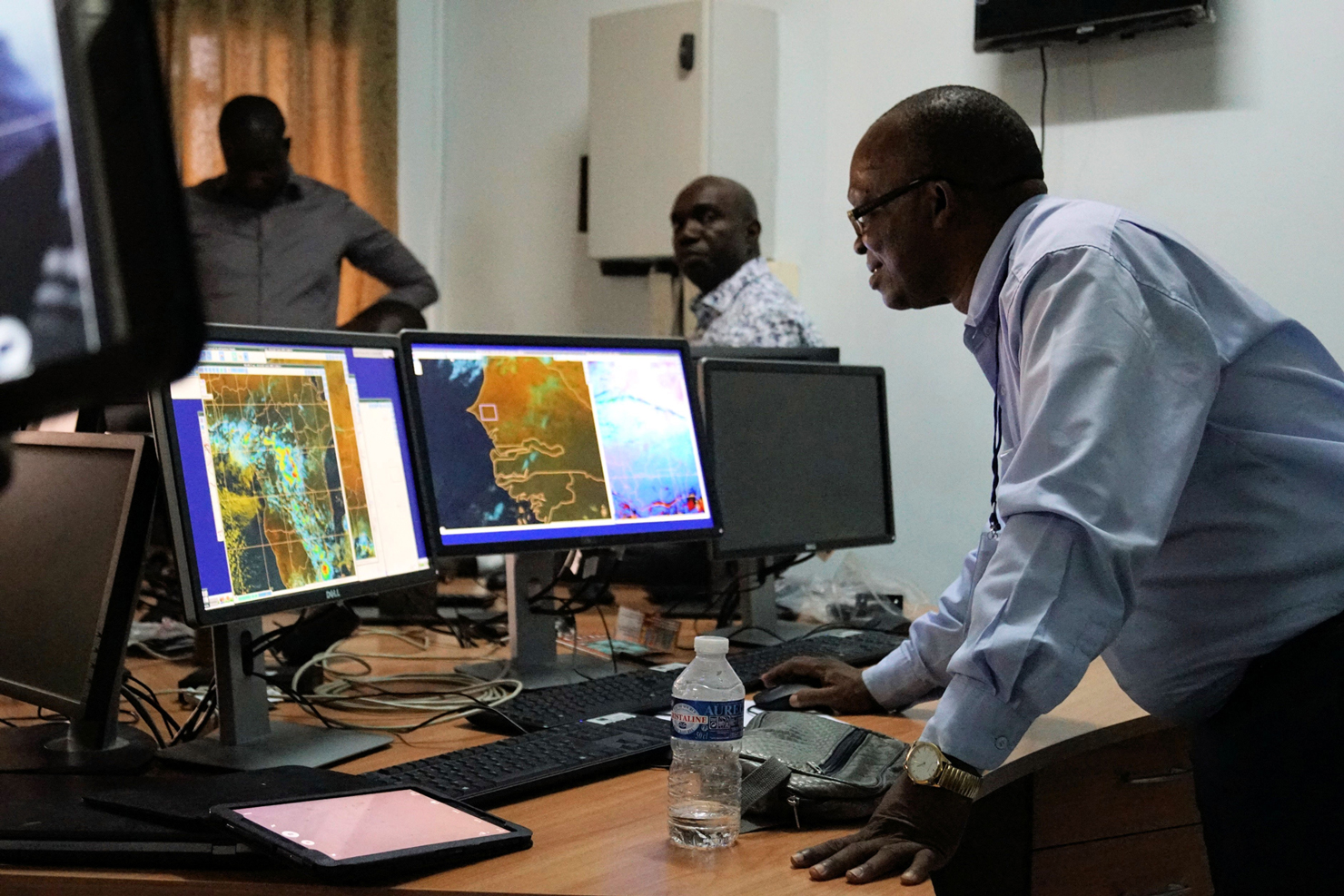What is a Testbed?
A weather forecast Testbed is a short event (2 weeks) to bring forecasting stakeholders together to trial new models and methods
Testbeds have been run annually in the USA for a number of years, to improve the forecasting of severe storms and tornados, bridging the gap between research and operations.
The GCRF African-SWIFT project (2017 – 2022) introduced the first testbeds to Africa (2019 and 2021 in Senegal, Ghana, Nigeria, Kenya) bringing together researchers, forecasters and users:
https://doi.org/10.1175/BAMS-D-21-0156.1

The WISER-EWSA Testbed 1 (TB1) was a live severe weather forecasting event conducted in Southern Africa over a period of 2 weeks. During the testbed meteorologists, academics, economists, and user-engagement specialists will create real-time warnings of severe weather, deliver these to partnering user groups, and co-evaluate the effectiveness of those warnings. Learning from TB1 is being used to design and deliver the second testbed in January/February 2025
The creation and delivery of forecasts will be conducted in three centres. With the Testbed Operational Centre (TOC) at ZMD in Lusaka, Zambia for TB1 and at INAM in Maputo, Mozambique for TB2. Smaller teams will remain in SAWS (Pretoria) and INAM/ ZMD respectively to focus on engagement with their local user groups in the forecast delivery.
The testbeds will create and share forecasts of severe and high-impact weather in the Southern African region. They will be conducted as a co-production and evaluation exercise in partnership with a selected group of forecast users. The activity will not replace or duplicate any mandated weather services and early warning systems.
We will perform testing in real time of the current forecasting and nowcasting capability. Forecasters, researchers and users co-produce solutions, in preparation for the events.
- Forecasters and researchers jointly create forecasts.
- We use real-time observations and explore their value.
- We evaluate models from a user perspective, and create an environment for model intercomparison.
- We generate new Standard Operating Procedures for user-focussed forecasting and nowcasting.
Outputs of the EWSA Testbeds:
- Early Warning Systems (EWS) which have been co-produced between forecast providers (in a network of agencies and countries) and users, and tested and evaluated in the testbed.
- Standard Operating Procedures (SOPs) of the EWS.
- Documentation of other good practice.
- Training and practical experience of forecasters and users in use of nowcasting as a part of EWS.
- End-to-end evaluation of the value-chain associated with urban EWS.
Further information
For further information, please contact the WISER-EWSA Project Office: wiser-ewsa@ncas.ac.uk